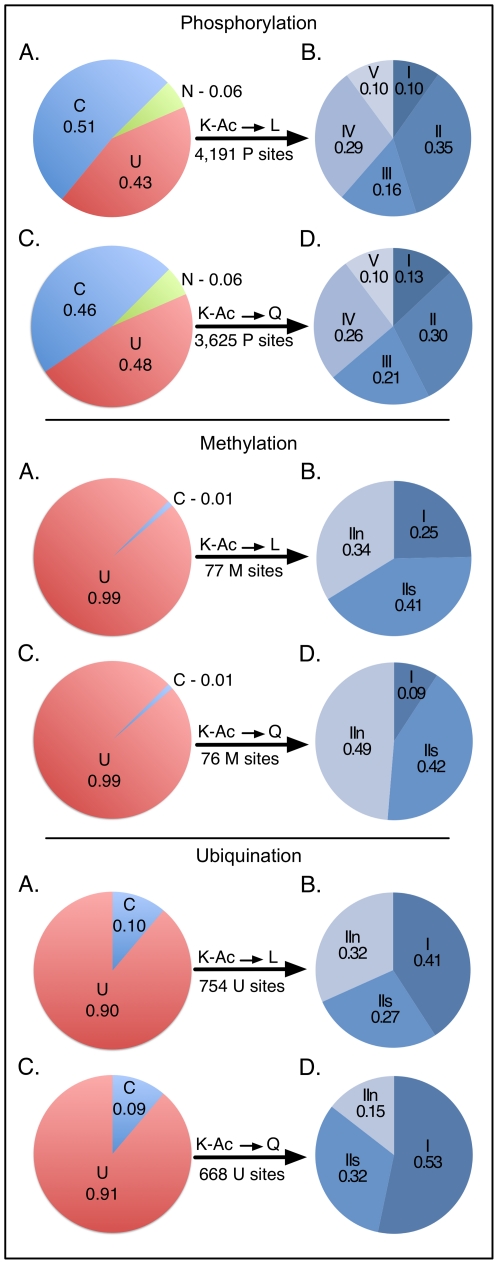Figure 6. Crosstalk prediction.
Top: (A) The influence of acetylated lysine on neighboring phosphorylation sites was predicted by substituting a leucine for a lysine at all predicted K-Ac sites and then predicting potential phosphorylation sites using NetPhosK 1.0. (B) In all, 51% of nearby phosphorylation sites were affected, and these were classified as Type I (gain of a phosphorylation site, 10%), Type II (loss of a phosphorylation site, 35%), Type III (retention of a phosphorylation site with gain of kinase binding site, 16%), Type IV (retention of a phosphorylation site with loss of kinase binding site, 29%), and Type V (loss of an endogenous kinase binding site with concomitant gain of a new one, 10%). This analysis was repeated by substituting glutamine for lysine (Panels C and D). This analysis was repeated for methylation using BPB-PPMS (middle) and ubiquitination using UbPred (bottom). For further details, see text.

